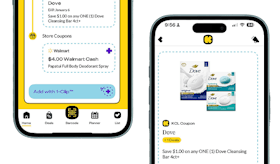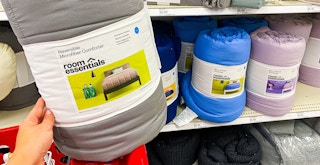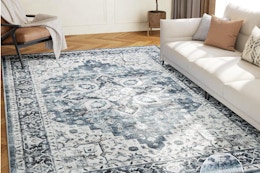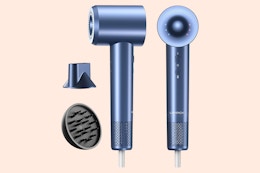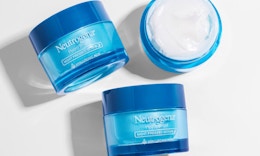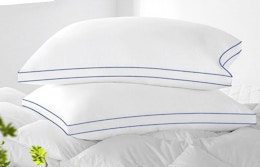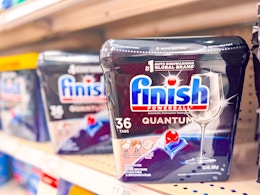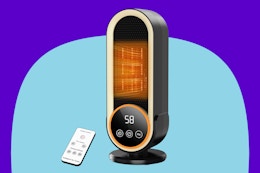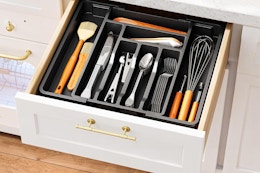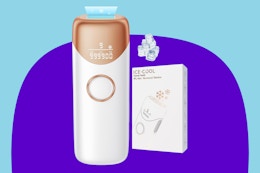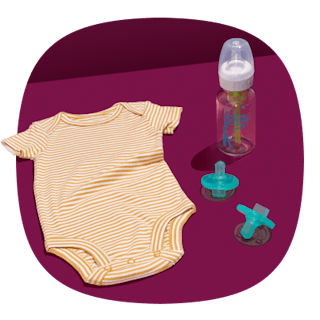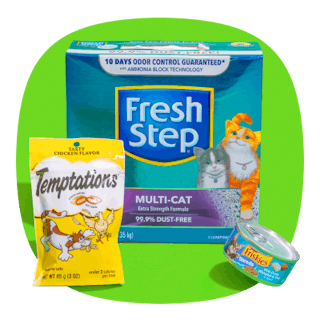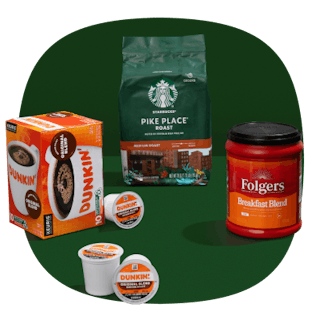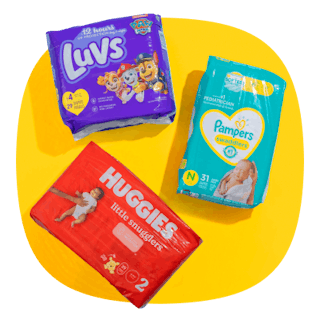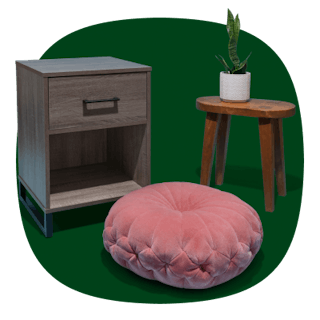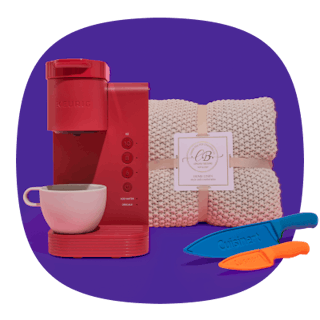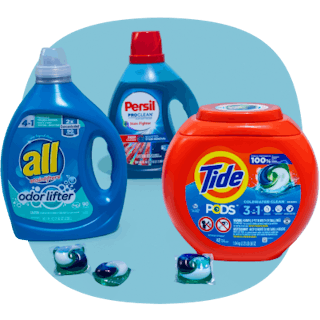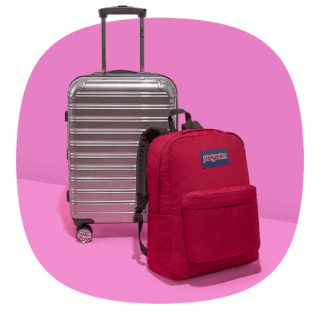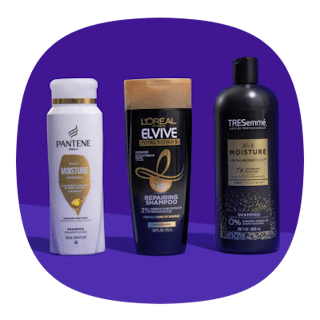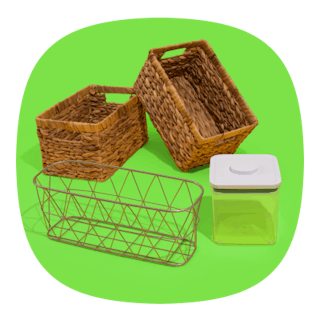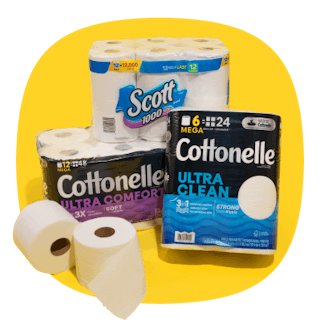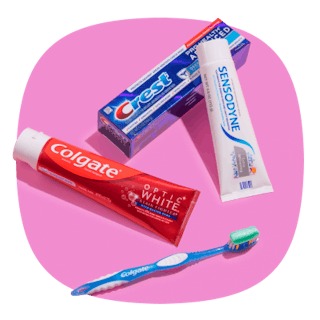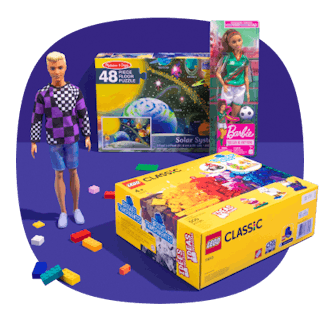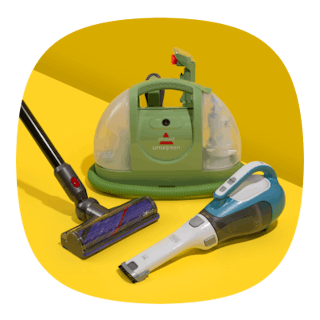If you, like myself, are a certified nap queen, you’re probably on the hunt for the coziest cheap bedding. Because who doesn’t love snuggling up with piles of soft blankets after a long day? Or, even better, during a long day. You really can’t put a price on comfort.
You can, however, put a price on bedding. That’s why I did some serious research on cheap bedding and how to save money without sacrificing comfort. Because cheap bedding doesn’t have to feel cheap. Instead, I looked for the best tips on finding bedding that rests at the perfect intersection of price and comfort.
Whether you’re looking for sheets, pillowcases, comforters, or even a new mattress, I found the least expensive options. You’ll be resting easy knowing you saved a fortune.
For more smart shopping tips and savings hacks, download the KCL app or text HACKS to 57299.
1. Opt for synthetic fibers to save the most money.
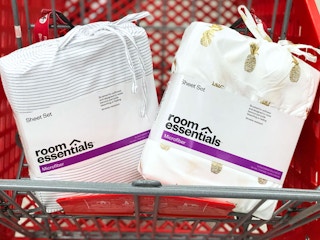
When looking for cheap bedding, check for materials like polyester, rayon, and microfiber. Those tend to be the most commonly used synthetic fibers for things like sheets. For example, at Target, microfiber sheet sets cost between $9.50 and $22, depending on the size of your bed.
By contrast, the cheapest adult-sized cotton sheets at Target cost between $20 and $40. The best intersection of comfort and value can be found in synthetic fibers.
2. Lower thread count sheets are less expensive.
If you must have cotton for your bedding, the cheapest options have a low thread count. While technically every woven thing has a thread count (microfiber is usually 300 or less), it makes a bigger difference with a textile such as cotton. Lower thread count cotton products (i.e. 300 or less) are relatively inexpensive compared to more luxurious bedding options with 500+ thread counts. For example, a 300-thread count fitted sheet at Target retails for $15-$30. Whereas a 500-thread count fitted sheet from the same retailer goes for $27.99-$44.99.
However, lower thread-count cotton options can feel scratchy or uncomfortable. If you have sensory-processing difficulties, consider synthetic materials for the best intersection of comfort and value.
Related: The Best Sheets at Target Are the Ones on Sale — Look For These Prices
3. Comforters cost almost half as much as duvets.

When it comes to bigger blankets, shop for a comforter to save the most. When you opt for a duvet, you have to purchase not only the insert but also the cover. The cover itself can cost as much as a whole comforter. So when you consider purchasing the insert as well as the cover, the expenses add up fast.
Let’s talk numbers, though. The least expensive microfiber comforter at Target is between $20 and $35, depending on size. By contrast, the cheapest microfiber duvet cover is between $20 and $30 and the cheapest duvet insert is between $25 and $35. Meaning if you pick a duvet then you’re looking at spending $45 and $65 altogether.
4. Opt for bedding sets to save the most money.

It’s true with streaming services and meal deals, and it’s true with bedding: Buying items in a set is cheaper than buying items individually. While you can get away with only buying a top sheet and a throw blanket (just ask any college student), generally you need a flat and fitted sheet, at least two pillowcases, and a comforter. You could buy those pieces separately, or just get a five-piece set.
So let’s compare costs. The cheapest five-piece bedding set at Target is between $35 and $50, once again depending on the size of your bed. If you were to buy the pieces individually, it’ll cost $5 for a pillowcase, between $9.50 and $22 for two sheets and a pillowcase, and between $20 and $30 for a comforter. This means the price range for the pieces individually is $34.5 – $57. While it may be cheaper to buy each piece separately if you have a twin, it’s more pricey if you have a bed larger than a twin.
5. Looking for a mattress? Shop during holidays like Memorial Day or Labor Day.
Mattress stores always have major sales during the holidays. Though I recommend shopping during holidays like Memorial Day, Fourth of July, or Labor Day since the winter holidays tend to be expensive in their own right. If you can wait for one of those events, you’ll see savings anywhere from $200 to $1,000. For example, Mattress Firm’s 2023 Memorial Day Sale offers up to 50% off bestsellers, an extra 10-20% military discount, and tons of free gifts valued at up to $300.
6. The cheapest mattress brand is Sleepy’s at just $199 for a full mattress.

For our purposes here, I’m going to compare the cost of the cheapest full-size mattress across popular brands available at multiple retailers. I went with full because it’s the smallest mattress that can comfortably fit more than one person. (Again, ask any college kid. Sharing a twin mattress is not easy.) Or, in my case, a full is the smallest that can comfortably fit me when I spread out like a starfish.
Without accounting for sales since those are limited-time and change often, Sleepy’s is the least expensive brand by almost $200. Sealy, Zinus, and Tulo all have options under $500 making them good second choices. The most expensive options were Tempur-Pedic and Stearns and Foster at over $1,700 for one mattress.
Download the KCL app to add and redeem coupons in store
